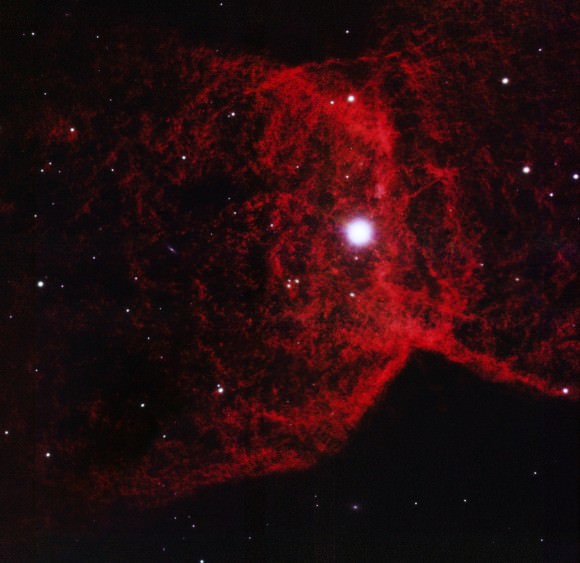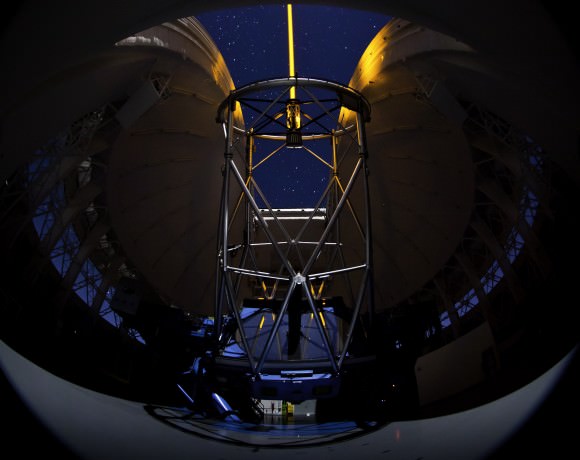Rise above Earth with a telescope, and one huge obstacle to astronomy is removed: the atmosphere. We love breathing that oxygen-nitrogen mix, but it’s sure not fun to peer through it. Ground-based telescopes have to deal with air turbulence and other side effects of the air we need to breathe.
Enter adaptive optics — laser-based systems that can track the distortions in the air and tell computers in powerful telescopes how to flex their mirrors. That sparkling picture above came due to a new system at the Gemini South telescope in Chile.
It’s one of only a handful pictures released, but astronomers are already rolling out the superlatives.
“GeMS sets the new cool in adaptive optics,” stated Tim Davidge, an astronomer at Canada’s Dominion Astrophysical Observatory.

“It opens up all sorts of exciting science possibilities for Gemini, while also demonstrating technology that is essential for the next generation of ground-based mega-telescopes. With GeMS we are entering a radically new, and awesome, era for ground-based optical astronomy.”
Other telescopes have adaptive optics, but the Gemini Multi-Conjugate Adaptive Optics System (GEMS) has some changes to what’s already used.
It uses a technique called “multi-conjugate adaptive optics”. This increases the possible size of sky swaths the telescope can image, while also giving a sharp view across the entire field. According to the observatory, the new system makes Gemini’s eight-meter mirror 10 to 20 times more efficient.

The system uses a constellation of five laser guide stars, and has several mirrors that can deform according to measurements obtained by the sodium laser. We have more technical details in this past Universe Today story by Tammy Plotner.
The next step will be seeing what kind of science Gemini can produce from the ground with this laser system. Some possible directions include supernova research, star populations in galaxies outside of the Milky Way, and studying more detail in planetary nebulae — the remnants of low- and medium-mass star.
Check out more photos from Gemini at this link.
Source: Gemini Observatory

